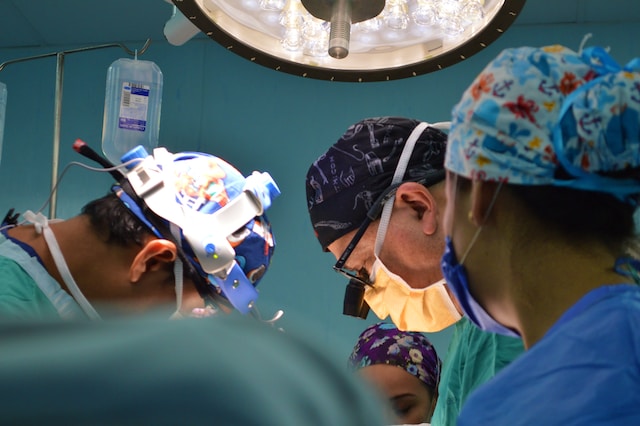Gallstones in gallbladder are a common medical condition that affects millions of people worldwide. These small, hardened deposits, formed within the gallbladder, can have a significant impact on an individual's health when left untreated. In this article, we will delve into the world of gallstones, exploring their formation, their presence within the gallbladder, and the potential complications that can arise when these tiny yet troublesome stones are neglected. Understanding these complications is crucial, as it underscores the importance of early detection and treatment, offering individuals the knowledge needed to make informed decisions about their health.

Gallstone Formation
To comprehend the complications of untreated gallstones, it's important to first understand how they form. Gallstones typically develop when there is an imbalance in the substances that make up bile, a digestive fluid produced by the liver and stored in the gallbladder. These substances can include cholesterol, bilirubin, and calcium. When there's an excess of one or more of these components, they can crystallize and form gallstones. Over time, these stones can grow in size and number, increasing the likelihood of complications.
Biliary Colic
One of the early signs of gallstones is biliary colic, a type of abdominal pain that occurs when a gallstone temporarily blocks the flow of bile. This pain can be intense and is usually felt in the upper right side of the abdomen, often radiating to the back or right shoulder. Biliary colic can last for several hours and is typically triggered by the consumption of fatty or greasy foods. While it's not a life-threatening condition, recurrent biliary colic episodes can significantly impact a person's quality of life.
Acute Cholecystitis
When a gallstone becomes lodged in the cystic duct, it can lead to acute cholecystitis, a painful and potentially serious condition. This occurs when the gallbladder becomes inflamed due to the obstruction, causing severe pain in the upper right abdomen, fever, and nausea. Left untreated, acute cholecystitis can lead to complications such as abscess formation, gangrene of the gallbladder, or even perforation, which can be life-threatening.
Choledocholithiasis
Gallstones can sometimes migrate from the gallbladder into the common bile duct, a tube that carries bile from the liver and gallbladder to the small intestine. When this happens, it's called choledocholithiasis. These stones can obstruct the flow of bile and lead to jaundice, a condition characterized by yellowing of the skin and eyes. Choledocholithiasis can also cause pancreatitis, an inflammation of the pancreas, which can be a serious and painful complication.
Gallstone Ileus
In rare cases, a large gallstone can erode through the wall of the gallbladder and enter the intestines, causing a condition known as gallstone ileus. This condition can lead to intestinal blockage, which results in severe abdominal pain, nausea, and vomiting. Gallstone ileus is a medical emergency that requires surgery to remove the obstructing stone and repair any damage to the intestines.
Chronic Cholecystitis
Chronic cholecystitis is a long-term inflammation of the gallbladder that can result from repeated episodes of acute cholecystitis or persistent irritation from gallstones. Over time, this inflammation can cause scarring and thickening of the gallbladder wall, reducing its ability to function properly. Chronic cholecystitis can lead to ongoing discomfort, digestive problems, and a decreased quality of life.
Gallbladder Cancer
While rare, untreated gallstones can potentially increase the risk of developing gallbladder cancer. Chronic inflammation of the gallbladder, as seen in chronic cholecystitis, is believed to be a risk factor for the development of cancer. Gallbladder cancer is often diagnosed at an advanced stage, making it difficult to treat. Early detection and treatment of gallstones can help reduce the risk of this rare but serious complication.
Gallstone-Induced Pancreatitis
Gallstones can also trigger an attack of pancreatitis, a painful inflammation of the pancreas. This occurs when a gallstone blocks the pancreatic duct, which carries digestive enzymes produced by the pancreas. The blockage can lead to the activation of these enzymes within the pancreas, causing damage and inflammation. Acute pancreatitis is a potentially life-threatening condition that requires immediate medical attention.
Conclusion
In conclusion, gallstones within the gallbladder are not to be underestimated, as they can give rise to a cascade of complications, from biliary colic to severe conditions like acute cholecystitis and gallstone ileus. Moreover, the risk of gallbladder cancer remains a looming concern for those who leave these stones untreated. Early intervention is the key to averting these potential health crises. On a broader medical note, the significance of timely medical attention cannot be overstated, whether for gallstones or conditions like gastric cancer surgery. Prioritizing one's health and seeking prompt treatment is paramount to ensuring a brighter and healthier future.


No comments yet